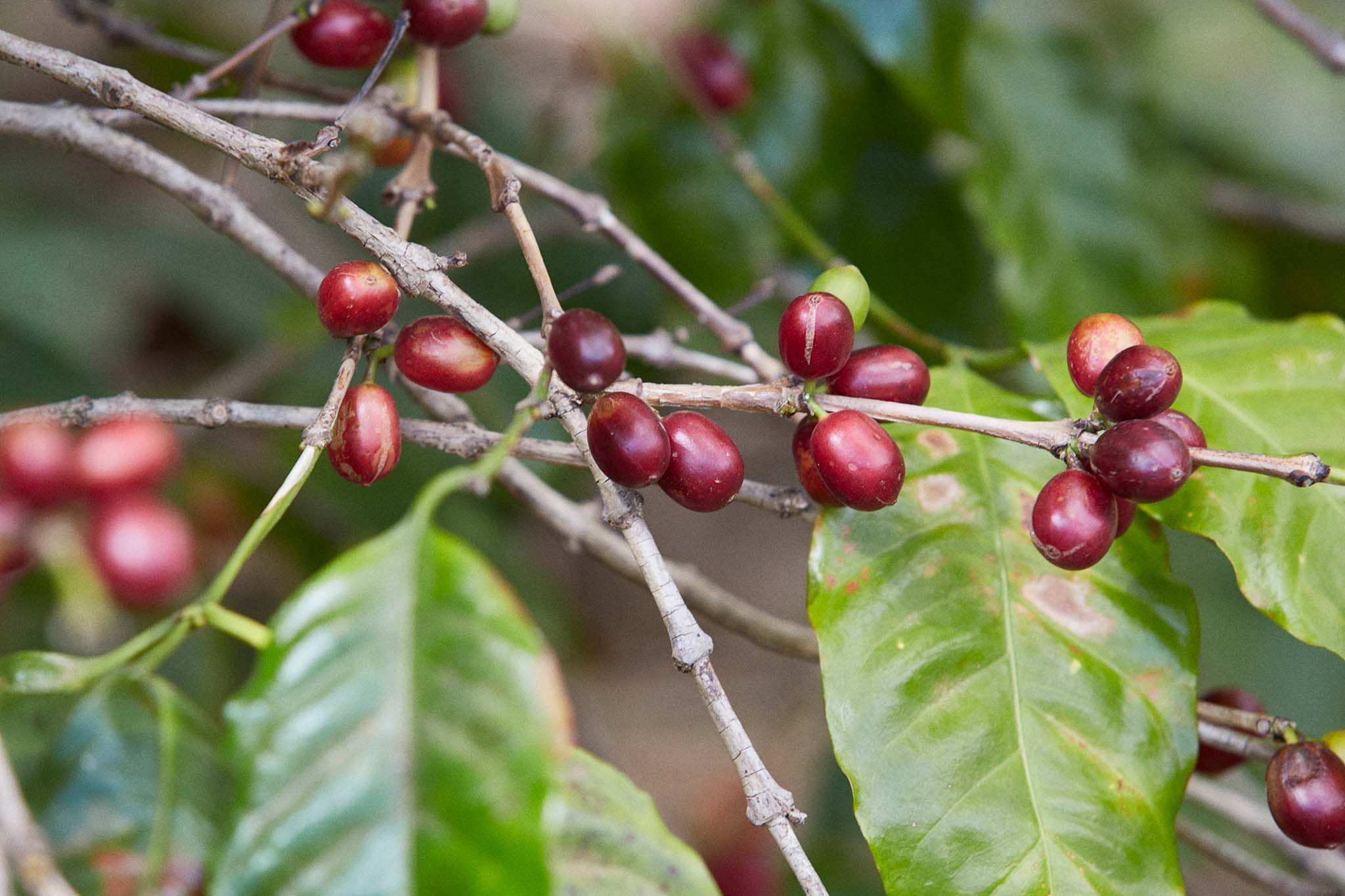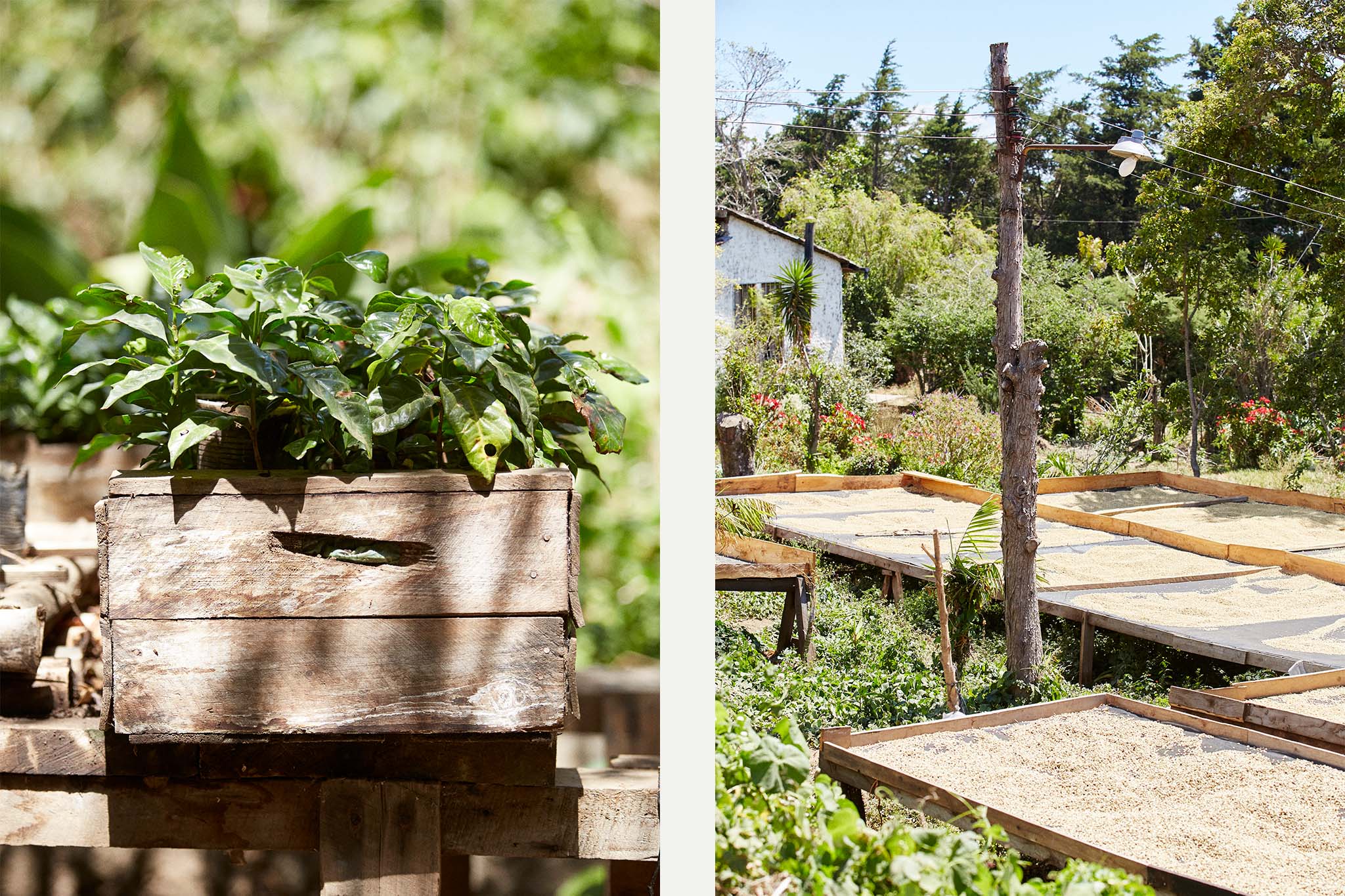A Guide To Coffee Varietals
Like many speciality topics, coffee is one often laced with convoluted terminology–but while the beauty of coffee is its complexity, the conversations about it needn’t be complicated.

What's A Coffee Varietal?
A coffee varietal is the name given to the type of coffee plant–think of it like apple trees in an orchard: one type of tree might produce red apples, while another type is grown for green apples. Different types - varietals - of coffee plant provide the producer with the opportunity to grow cherries known to have a specific sweetness, nuance, and body; where the varietal is grown, and in what conditions, are key factors that will influence the flavour of its fruit.
How Many Coffee Varietals Are There?
There are over 100 species in the genus Coffea, but only two that are commonly cultivated for drinking: coffea arabica and coffea canephora (also known as robusta). The coffee we purchase at Origin all comes from the arabica species, which contains less caffeine, but greater complexity in flavour, acidity, sweetness, and aroma.
Here we delve into some of the most commonly used varietals that our producers work with, proudly forming everything from our much-loved mainstay staples, through to exceptional, limited edition releases.
Typica
With a relatively low yield, as well as high susceptibility to pests and disease, Typica might not seem a winning first choice–but with a remarkable cup quality that can secure high prices, this plant remains one of the most culturally and genetically important arabica coffee varietals in the world, and a popular choice. With its history firmly rooted in Ethiopia, Typica has travelled well throughout the world. Best grown at high altitudes, Typica is tall and slim, well-adapted to cold conditions, and produces large coffee beans, offering a sweet and clean, fruity, floral, and complex cup.

Bourbon
A natural mutation of Typica, the Bourbon varietal, like its sibling, is one of the most important arabica plants in the world, with genetic tests confirming that Typica and Bourbon were the main seeds taken from Ethiopia to Yemen. From here, descendants of these varietals have formed the foundations of modern arabica coffee cultivation. In the 18th century, the French transported to La Réunion (previously known as Ile Bourbon), an island off Madagascar; in the 19th century, the varietal was introduced across Africa and the Americas. Growing well at high altitudes, Bourbon is a tall varietal that, while susceptible to disease, produces a fair yield, and outstanding cup quality, renowned for sweetness.
Pacamara / Red / Yellow
Created by the Salvadorian Institute for Coffee Research (ISIC) in 1958, Pacamara takes its name and lineage from the varietals Paca and Maragogipe. While the varietal often dominates Cup of Excellence competitions, the plant is not without its challenges. Pacamara can be unstable from one generation to the next, and the plants carry a risk of reverting back to the parent varietal Pacas. When it comes to genetic mutations, it’s not all bad–the yellow pacamara varietal is a freak natural occurrence, where the red fruit turns yellow. The Pacamara is renowned for its excellent cup quality, often presenting unusual and striking combinations with elegant acidity.
Gesha
First discovered in the Gori Gesha forest of Ethiopia in the 1930s, the Gesha varietal reached Panama in the 1950s. With low productivity and brittle branches, the plant received little interest from farmers, despite its hardiness and tolerance to leaf rust. This all changed with a Best of Panama competition in 2004, where a veteran judge believed an Ethiopian coffee had been snuck onto the table. The coffee received exceptionally high marks, and broke the then record for a green coffee auction price, reaching over $20 per lb. Famed for delicate floral notes of jasmine, and light stone fruit flavours, the Gesha varietal still holds its value and prestige, in Panama and beyond.
F1 Hybrids
Coffee’s limited genetic diversity means that it’s exceptionally vulnerable–a real concern when faced with the challenges of rising temperatures, limited land space for growth, and new disease. Looking to safeguard farmers’ livelihoods, the people at the World Coffee Research organisation have been working on creating hybrids that produce high yields and a strong resilience to disease. The not-profit, agricultural research organisation crosses genetically distinct parents; the offspring of which are the first-generation hybrids. These hybrids aren’t entirely risk free - often requiring in-depth education for farmers, as well as increased nutrition - but they do offer a glimpse of the future of speciality coffee.
SL28
This drought tolerant, high-yield varietal was considered the prize selection during a period of intensive breeding, a result of individual tree selections - where forty-two trees of various origins were selected and studied at the Scott Laboratories - now known as the National Agricultural Laboratories (NARL) at Kabete; individual tree selections during the 1935-1939 period at the laboratories were prefixed SL. SL28 was selected in 1935 from a single tree in a collection named Tanganyika Drought Resistant - the result of exploration in the Moduli district of Tanganyika (now Tanzania). Today the varietal can be found in Kenya, Malawi, Uganda, and Zimbabwe.
SL34
Found mostly in Kenya, SL34 is another result of the National Agricultural Laboratories (NARL), selected from a single tree on the Loresho Estate in Kabute, reputed to have been labelled, ‘French Mission’. Genetic testing links the plant’s relation to the Typica genetic group. SL34 is found mostly in Kenya, well suited to high altitudes with good rainfall. The varietal produces a high yield, and exceptional cup quality, but is susceptible to coffee berry disease.

Red / Yellow Catuai
Catuai is a hybrid of Mundo Novo and Caturra, offering high yields and ripe fruits of red or yellow. Commonly grown in Brazil, this varietal offers juicy citric characteristics, balanced with chocolate undertones. The plant’s name comes from the indigenous Tupi-Guarani language in Brazil, meaning, ‘very good’.
Heirloom / Local Landraces
Ethiopia is widely acknowledged as the birthplace of arabica coffee, and it was disseminated throughout the world from there. Ethiopian coffees are often given the name of ‘heirloom’ - a term that came into use with the growth of speciality coffee - due to historically limited access to information about native varietials. However, this term is very difficult to define consistently. Various varietials have naturally adapted over time in Ethiopia and can be referred to as “local landraces”. Over the past 40 years, farmers have received modern coffee varietals through the Jimma Agricultural Research Centre (JARC) to plant alongside their local landraces.
Sigara Utang
The Indonesia Coffee and Cocoa Research Institute (ICCRI) developed the Sigarar Utang varietal in the mid 90s. The coffee plant is a semi-dwarf with a dense foliage and narrow leaves that are bronze in colour, with a good resistance to coffee leaf rust. As the result of crossing Caturra and HdT831, the varietal is a prolific producer, with year-round fruit, giving credit to its name, which translates as, ‘quickly repay debt’. Found throughout Sumatra, the varietal produces large beans that become smaller as the plants age. Sigarar Utang has a good cupping profile, producing clean cups with herbal and fruit notes, a syrupy body, and a rich intensity and mouthfeel.
Andung Sari
Grown widely in Kayo Aro in the province of Jambi, Sumatra, the Anung Sari varietal is a cross of Caturra and HdT1343, offering seasonal fruit at a high yield with an excellent cup profile known for sweetness. This dwarf plant varietal grows best above 1,250 masl.
Obata
This high-yield varietal is another introduction to the changing landscape of speciality coffee, as more and more producers look to solutions in response to the very real effects of climate change, along with environmental factors such as disease. Developed by the Instituto Agronomico (IAC) of Sao Paulo State in Campinas, Brazil and released in 2000, this dwarf plant has a high resistance to leaf rust, producing large beans that consistently produce a clean and balanced cup, with delicate yet distinct acidity.

Acaia
Also known as Red Acaia, and Acaia Cerrado, this is a rare varietal found mainly in Brazil. As a natural mutation of the Mundo Novo varietal (itself a Typica and Bourbon hybrid), Acaia always performs well in Brazil’s Cup of Excellence competitions. The plant grows well over 800 masl, providing a high yield and a general resilience to pests and disease.
Jackson
Jackson is named after a coffee farmer in Mysore, India, who discovered the trees on his farm in the 1900s. As a late descendant of the first coffee seeds that were taken from Yemen and brought to India in 1670, the Jackson varietal is now commonly found in Rwanda and Burundi. Related to the Bourbon genetic group, Jackson is a tall growing, high-yield varietal that produces large beans, yet still susceptible to disease such as leaf rust.
Yellow Icatu
Developed in the 90s by the IAC in Campinas, Brazil, where it is still commonly grown and well regarded. A cross between the Mundo Novo and Yellow Bourbon varietals, the Yellow Icatu varietal is a tall tree favoured for its high yield and strong resistance to disease.